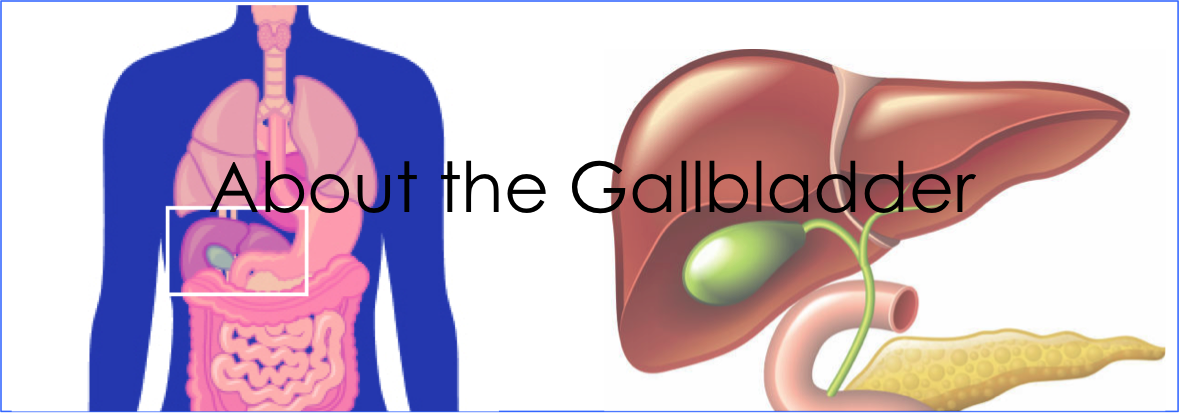Todays post is about the gallbladder.
This little organ is given little thought but its function makes a difference to how we digest our food.
What is the gallbladder?
The gallbladder is a part the body’s biliary system, which is made up of the liver, gallbladder, and pancreas and associated ducts. This system is needed for the production, storage, and secretion of bile.
Inside the body, the gallbladder can be found under the liver. It’s approximately the size of a small pear. Its function is to store bile until it’s needed for digestion.
The gallbladder is not considered absolutely necessary for human survival, as bile can reach the small intestine in other ways.
Bile is a thick liquid that’s green, brown, or yellow in color. It’s used to help with the breakdown of dietary fats and is produced by the liver. During a meal, bile moves from the liver directly to the small intestine. However, when we’re not eating, it is stored in the gallbladder until it’s needed
The gallbladder extracts water from its store of bile until the liquid becomes highly concentrated. The presence of fatty foods triggers the gallbladder to squeeze its bile concentrate into the small intestine.
Most people do not pay much attention to their gallbladder until it starts causing trouble.
What is meant by ‘trouble’?
For unclear reasons, substances in the bile can crystallize in the gallbladder. This forms what are known as gallstones. Gallstones are small stones made from cholesterol, bile pigment and calcium salts, usually from a mixture that forms in the gallbladder. The stones can range in size from as small as a grain of sand to as large as a golf ball.
They are a common disorder of the digestive system, and affect around 15 per cent of people aged 50 years and over. Some people develop just one gallstone, while others develop many gallstones at the same time.
Gallstones are actually more common in women than in men. They are also more common in overweight people and people with a family history of gallstones. However, there is no known single cause of gallstones.
In most cases gallstones don’t cause any problems. Though if a gallstone lodges in a duct and causes a blockage, the resulting signs and symptoms may include:
– Sudden and rapidly intensifying pain in the upper right portion of the abdomen or in the centre of the abdomen, just below the breastbone
– Back pain between the shoulder blades
– Pain in the right shoulder
– Nausea or vomiting
Gallstone pain may last anywhere from several minutes to a few hours. Blockages can also cause complications such as infections or inflammation of the pancreas (pancreatitis).
When gallstones cause infection in the gallbladder, this is called Cholecystitis. This condition causes severe pain and fever, and can require surgery when infection continues or recurs.
Medical treatment isn’t considered necessary unless there is a high risk of complications from the gallstones. Treatment options include surgery and shattering the stones with sound waves.
Best way to a healthy gallbladder
You can lower your risk of gallstones by following a healthy diet and getting regular physical activity to help you reach and maintain a healthy weight.
Experts recommend:
– Eating foods that are high in fibre, such as fruits, vegetables, beans, and peas.
– Eating whole grains, including brown rice, oats, and whole wheat bread.
– Eat healthy fats, like fish oil and olive oil, to help the gallbladder contract and empty on a regular basis.
– Eat fewer processed and refined carbohydrates and less sugar.
– Avoid fast foods and unhealthy fats, like those often found in fried foods.
As always, if you think your gallbladder is causing you trouble. Seek medical advice from your health professional.
We hope you found this information helpful.
Till the next post,
Live clean n prosper
Sources – Live Science , Healthline , Web MD –

